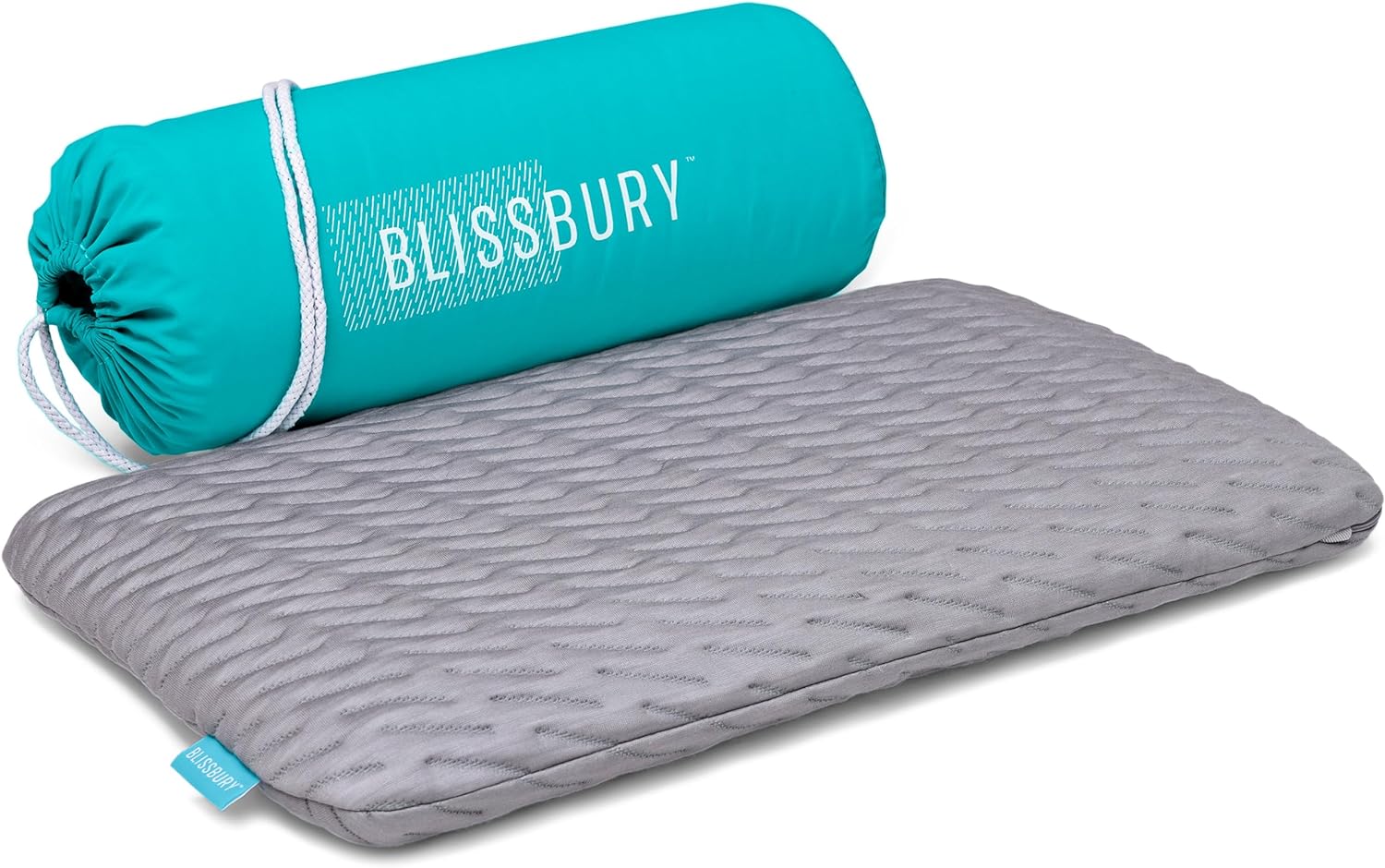Have you ever wondered what the perfect pillow thickness and softness is for side sleeping? Well, search no more! In this article, we will explore the ideal pillow characteristics that provide optimal comfort and support for those who prefer snoozing on their side. You’ll discover the key factors you need to consider while selecting the perfect pillow, ensuring you wake up feeling refreshed and ready to conquer the day. Bid farewell to restless nights and hello to a rejuvenating slumber! Let’s dive right in.
Review contents
Choosing the Right Pillow
When it comes to getting a good night’s sleep, choosing the right pillow is key. The pillow you sleep on can greatly impact your sleep quality, especially if you are a side sleeper. Side sleeping is a popular sleep position, but it can put strain on your neck, shoulders, and spine if you don’t have the proper pillow support. In this article, we will explore the factors to consider when choosing a pillow for side sleeping, including sleep position, pillow thickness, softness, and the different types of pillows available.
Consider Your Sleep Position
Before diving into the specifics of pillow thickness and softness, it is important to understand how your sleep position can affect your pillow needs. Side sleepers, in particular, face unique challenges when it comes to finding the right pillow. The key is to find a pillow that provides adequate support and alignment for your head, neck, and spine while keeping your body in a neutral position.
Importance of Pillow Thickness and Softness
Pillow thickness and softness play a vital role in ensuring a comfortable and supportive sleep surface for side sleepers. The right pillow thickness can help maintain proper spinal alignment, while the softness level can provide the necessary comfort and pressure relief. Let us delve deeper into each of these factors to understand their significance for side sleepers.
Factors to consider for Side Sleepers
As a side sleeper, there are a few specific factors you should consider when choosing a pillow. These include your shoulder width, neck support, and head alignment. Let’s explore each of these factors in more detail.
Shoulder Width
One important consideration for side sleepers is their shoulder width. If you have broad shoulders, you will likely need a thicker pillow to fill the gap between your head and the mattress effectively. On the other hand, if you have narrower shoulders, a thinner pillow might be more suitable.
Neck Support
Proper neck support is crucial for side sleepers to prevent neck pain and stiffness. The pillow should keep your neck aligned with your spine, neither tilting it upwards nor causing it to sag. Look for a pillow that cradles your neck while still providing support.
Head Alignment
A pillow that maintains proper head alignment is essential for side sleepers. It should align your head with your spine, keeping it in a neutral position. This will help avoid any strain on your neck and ensure a restful night’s sleep.
Optimal Pillow Thickness for Side Sleepers
Now that we’ve discussed the importance of pillow thickness for side sleepers, you may be wondering, “What is the optimal pillow thickness for me?” The answer can vary depending on your body size and personal preferences. Let’s explore why pillow thickness matters and how to determine the right thickness for your needs.
Importance of Pillow Thickness
The thickness of your pillow can greatly affect your sleep quality. If your pillow is too thin, it may not provide adequate support, leading to discomfort and improper spinal alignment. Conversely, if your pillow is too thick, it can place excessive strain on your neck and shoulders. Finding the perfect balance is crucial for a good night’s sleep.
Determining the Right Pillow Thickness
To determine the right pillow thickness for you, start by considering your shoulder width. As mentioned earlier, side sleepers with broader shoulders generally require a thicker pillow to maintain proper alignment. Measure the distance between your neck and the edge of your shoulder to get an idea of how much loft your pillow should have. Experiment with different pillow thicknesses until you find the one that feels the most comfortable and supportive.
Ideal Softness for Side Sleepers
In addition to pillow thickness, the softness level also plays a significant role in providing the ideal sleep surface for side sleepers. Let’s explore why pillow softness matters and how to choose the right softness level for your needs.
Importance of Pillow Softness
Pillow softness is essential for side sleepers to ensure proper comfort and pressure relief. If your pillow is too firm, it may cause discomfort and put excessive pressure on your ears, jaw, and side of the face. On the other hand, if your pillow is too soft, it may not provide adequate support, leading to misalignment of the head and neck. Striking the right balance is crucial to promoting a comfortable and restful sleep.
Choosing the Right Softness Level
When choosing the softness level of your pillow, consider your personal preferences and any specific comfort needs you may have. Memory foam pillows offer contouring support and can be a great choice for side sleepers who prefer a medium level of softness. Latex pillows provide a slightly firmer feel with good support. Down pillows offer a luxurious and soft surface, but they may require frequent fluffing to maintain their loft. Buckwheat pillows offer adjustable firmness by adding or removing buckwheat hulls.
Types of Pillows for Side Sleepers
Now that we have discussed the factors to consider for side sleepers, let’s explore the different types of pillows available in the market that cater specifically to side sleepers’ needs.
Memory Foam Pillows
Memory foam pillows are known for their excellent support and pressure relief. They conform to the shape of your head and neck, providing personalized support for optimal comfort. Look for a memory foam pillow with a contour design to cradle your neck and keep your spine aligned.
Latex Pillows
Latex pillows offer a bouncy and supportive feel that is ideal for side sleepers. They provide good airflow and are naturally hypoallergenic. Look for a latex pillow with a medium-firm feel to ensure proper comfort and support.
Down Pillows
Down pillows offer a plush and luxurious feel that many side sleepers love. They provide excellent softness and adaptability, but they may require frequent fluffing to maintain their loft. Consider choosing a down pillow with a higher fill power for enhanced support.
Buckwheat Pillows
Buckwheat pillows are filled with natural buckwheat hulls and offer customizable support. You can add or remove hulls to adjust the pillow’s firmness level according to your preference. Buckwheat pillows provide excellent breathability and can offer relief for those with allergies.
Special Features for Side Sleepers
In addition to the different types of pillows, there are also special features available that can enhance the sleep experience for side sleepers. Let’s explore some of these features.
Contoured Pillows
Contoured pillows are uniquely designed to accommodate the curves of your head, neck, and shoulders. They provide excellent support and can help maintain proper spinal alignment. Look for a contoured pillow that matches the natural curvature of your neck for optimal comfort.
Adjustable Pillows
Adjustable pillows allow you to customize the loft and firmness level to suit your personal preferences. They typically have removable inserts or chambers that can be added or removed to adjust the pillow’s thickness and softness. This versatility ensures you can find the perfect fit for your individual needs.
Cooling Technology
Cooling technology is an excellent feature for side sleepers who tend to get warm during the night. Look for pillows with cooling gel-infused memory foam or breathable covers that promote airflow and regulate temperature. This can result in a cooler and more comfortable sleep.
Caring for Your Pillow
To ensure your pillow lasts and continues to provide the support and comfort you need, proper care and maintenance are essential. Let’s explore some tips for caring for your pillow.
Pillow Maintenance
To keep your pillow clean and fresh, it is important to regularly fluff and rotate it. This helps maintain its shape and loft. Follow the manufacturer’s instructions for cleaning your specific pillow type, whether it is machine washable or requires spot cleaning. Using a pillow protector or pillowcase can also help extend its lifespan by protecting it from stains and dust.
Replacing Your Pillow
Even with proper care, pillows eventually lose their support and become less comfortable over time. It is generally recommended to replace your pillow every 1 to 2 years, depending on its quality and usage. Pay attention to any signs of wear and tear, such as lumps or sagging, and replace your pillow when it no longer provides adequate support.
Tips for Comfortable Side Sleeping
While choosing the right pillow is crucial for side sleepers, there are also other factors that can contribute to a comfortable night’s sleep. Here are some additional tips for side sleepers:
Pillow Placement
Position your pillow so that it supports your head and neck, keeping them aligned with your spine. This will help maintain proper posture and prevent strain on your neck and shoulders. Experiment with different pillow heights and positions until you find the most comfortable setup.
Body Pillow Usage
Using a body pillow can provide additional support and promote proper spinal alignment for side sleepers. Place the body pillow between your knees to alleviate pressure on your hips and lower back. This can enhance your overall sleep comfort and help reduce any discomfort or pain.
Sleeping Surface
While the pillow is important, the surface you sleep on also affects your sleep quality. Choose a mattress that offers adequate support and aligns your spine properly. A mattress with medium firmness is generally ideal for side sleepers, as it provides a comfortable balance between softness and support.
Consulting with a Professional
If you are still experiencing discomfort or have specific concerns regarding your sleep, it may be beneficial to consult with a professional. Speaking to a chiropractor or physiotherapist can provide valuable insights and personalized recommendations based on your individual needs. Additionally, if you suspect you have a sleep disorder, it is important to reach out to a sleep specialist for further assessment and guidance.
Conclusion
Choosing the right pillow is essential for side sleepers to ensure a comfortable and restful night’s sleep. Considering factors such as sleep position, pillow thickness, and softness is key to finding the perfect pillow for your needs. The ideal pillow thickness and softness may vary depending on your body size, shoulder width, and personal preferences. Therefore, take the time to explore different options and consult with professionals if needed. With the right pillow support, you can wake up feeling refreshed and ready to take on the day. Sweet dreams!



























